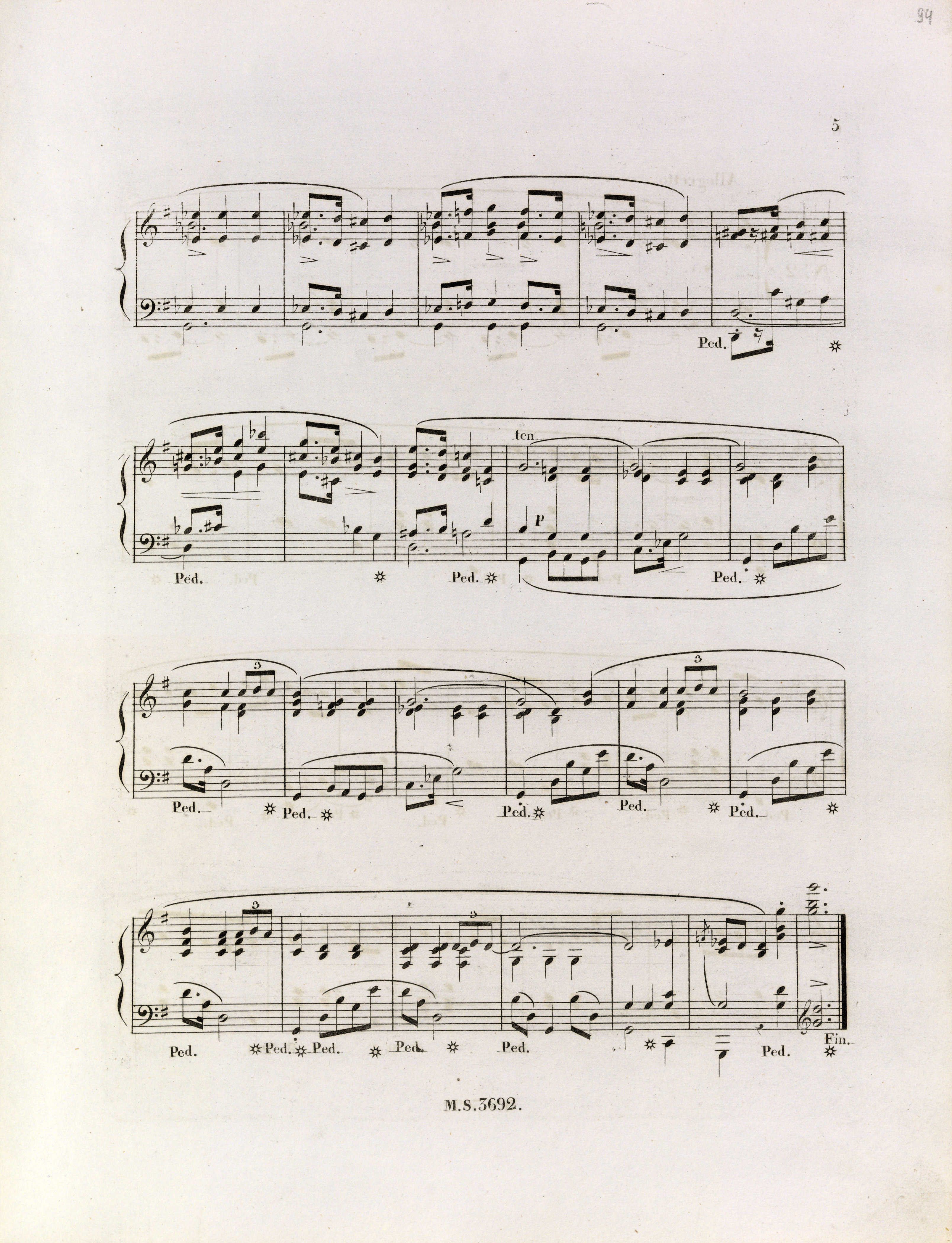



It is difficult to say which mark was intended by Chopin in this bar, i.e. a reversed long accent, a common long accent or a  hairpin. The mark of A1, ambiguous due to the arms of different length, may be interpreted as:
hairpin. The mark of A1, ambiguous due to the arms of different length, may be interpreted as:
- a reversed long accent, if we consider the top shorter arm. The mark would then emphasise the b
 1-b1 transition, which is compliant with the context in which Chopin would use such accents (cf., e.g. the Concerto in E Minor, Op. 11, II mov., b. 29);
1-b1 transition, which is compliant with the context in which Chopin would use such accents (cf., e.g. the Concerto in E Minor, Op. 11, II mov., b. 29); - a short
 hairpin, if we consider the bottom longer arm. At the same time, this is the version featured in GE. A comparison with the long accents visible in A1 in b. 6, 26 or 76 reveals that even such marks may indicate long accents in A1.
hairpin, if we consider the bottom longer arm. At the same time, this is the version featured in GE. A comparison with the long accents visible in A1 in b. 6, 26 or 76 reveals that even such marks may indicate long accents in A1.
It is the origin of the  mark in FE that is of crucial importance. The absence of its counterpart in EE suggests that it was added by Chopin in the last phase of proofreading of FE1. However, this most natural scenario may not represent reality. The traces visible in EE suggest that the
mark in FE that is of crucial importance. The absence of its counterpart in EE suggests that it was added by Chopin in the last phase of proofreading of FE1. However, this most natural scenario may not represent reality. The traces visible in EE suggest that the  mark was printed there and then removed (according to a less likely possibility, the mark could have been engraved very inaccurately, so it would have been practically illegible). Anyway, if the
mark was printed there and then removed (according to a less likely possibility, the mark could have been engraved very inaccurately, so it would have been practically illegible). Anyway, if the  hairpin were actually present in EE, it is uncertain whether it was Chopin that was responsible for the change of its direction in FE, since it could have simply been a mistake of the engraver consisting in reversing the mark (the engraver could have been influenced by the previous marks).
hairpin were actually present in EE, it is uncertain whether it was Chopin that was responsible for the change of its direction in FE, since it could have simply been a mistake of the engraver consisting in reversing the mark (the engraver could have been influenced by the previous marks).
Consequently, each of the source versions may theoretically correspond to Chopin's intention; if the mark in FE, which is most probably to be interpreted as a long accent, is a result of Chopin's proofreading, it is probably two versions that are authentic. Taking into account the evident long accent written in A1 in similar b. 76, we consider an analogous long accent in FE to be the most likely version also here. The reversed long accent in that manuscript is also authentic, unless Chopin committed a mistake in A1. In this situation, we consider the version of GE to be least credible.
Compare the passage in the sources »
category imprint: Graphic ambiguousness; Interpretations within context; Differences between sources
issues: Long accents, EE revisions, Sign reversal, Authentic corrections of FE
notation: Articulation, Accents, Hairpins

